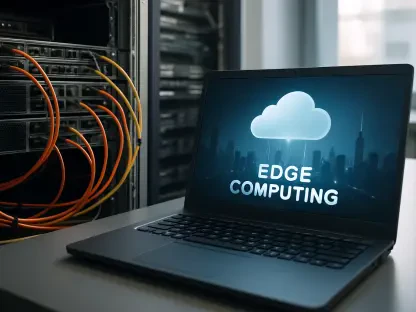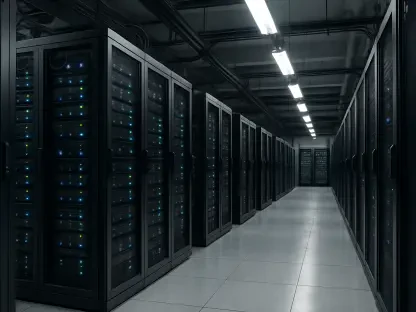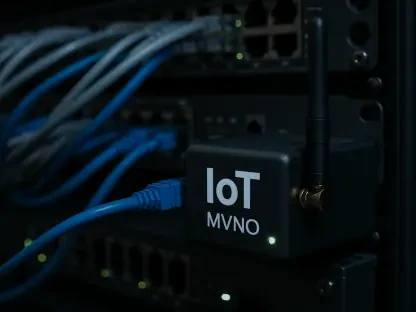CES Tech 2024 was the usual tech extravaganza: big brands, big announcements, keynotes, and demos. No one could’ve predicted that the biggest buzz would be created most quietly: the debut of Wi-Fi 7 as a feature on the latest laptops.
For tech enthusiasts, this promises to be a major upgrade, enabling higher-speed connections, lower latency, and a more intuitive bandwidth routing experience.
Here’s what Wi-Fi 7 offers users:
It’s available, but not that accessible
Wi-Fi 7 was first and foremost designed for gaming laptops, and the focus on gaming makes sense. One of the biggest benefits of Wi-Fi 7 is that it allows one device to connect to your router on multiple bands—a feature called Multi-Link Operation—which gives your laptop options when it comes to where to funnel its packets.
That means that when your 5GHz band is at capacity, it’ll just send the data down the 6GHz pipe, and vice versa. The result should be lowered latency when you’re on a busy network, which is critical when you’re not able to wire up with Ethernet.
Most of the new laptops equipped with Wi-Fi 7 are on their way very soon. But some of the earliest are, at least for now, very expensive: the 16-inch Razer Blade 16 starts at $3,000, and the 18-inch MSI Titan 18 HX A14V costs at least $5,000. Both of those are due to hit the market in mid-January.
While many people only recently upgraded to Wi-Fi 6 or Wi-Fi 6E, the successor to those standards has already arrived. Wi-Fi 7 is the next significant advance, and just like its predecessors, it promises faster connections, lower latency, and the ability to gracefully manage more connections.
If you are looking to improve your Wi-Fi today, Wi-Fi 7 is not the answer because support will be scarce. But early adopters will be excited by the news that the Wi-Fi Alliance has unveiled the “Wi-Fi 7 Certified” program. Realistically, it will be a good while before most of us should consider switching. If you need to upgrade, first consider delving into how to buy a router.
What is Wi-Fi 7?
The latest generation of Wi-Fi offers improvements in comparison to previous versions, Wi-Fi 6 and Wi-Fi 6E, with the main draw card being a massive speed improvement. Proponents of Wi-Fi 7 will also make mention of the reduced latency, the increase in capacity, and the boost in stability and efficiency.
One of the drawbacks, which detractors are quick to point out, is that Wi-Fi 7 is not accessible to the masses. Upgrades are required all around and include new hardware like laptops, which are expensive themselves.
What Benefits Does Wi-Fi 7 Bring?
With its increased speed and support for multi-connections, Wi-Fi-7 is far more adaptive and reliable than its predecessors. With 8K video slowly entering the mainstream, gamers and streamers are likely to be the early adopters of this technology, and will be particularly useful for AR and VR applications.
Wi-Fi 7 also offers a solution to the issues of congestion and interference, which is great news for neighborhoods with overlapping networks, and small areas with ”densely packed devices”. Wi-Fi 7 is an ideal solution for enterprises or large venues like stadiums and concert venues.
How Does Wi-Fi 7 compare to Wi-Fi 6?
Wi-Fi 7 has come up quite quickly; Wi-Fi 6 debuted just four years ago, and Wi-Fi 6E went mainstream in 2022. At a glance, this new version offers similar benefits to its predecessor. Both claim to open up the 6-GHz band, and make use of the same 2.5-GHz, 5-GHz, and 6-GHz bands.
The upgrades include:
- Wider Channels
Each band is broken into channels. The 2.4-GHz band comprises 11 channels of 20 megahertz (MHz) each. The 5-GHz band has 45 channels, but instead of being limited to a width of 20 MHz, they can combine to create 40-MHz or 80-MHz channels. The 6-GHz band supports 60 channels, and with Wi-Fi 6E they can be as wide as 160 MHz.
Wi-Fi 7 supports channels that are up to 320 MHz wide. The wider the channel, the more data it can transmit.
- Multi-Link Operation
Perhaps the most exciting advance in Wi-Fi 7 is Multi-Link Operation (MLO). Every previous Wi-Fi standard establishes a connection between two devices on a single band. Even a tri-band Wi-Fi 6E router connects two devices on a single band on a fixed channel (the router decides whether to connect on the 2.4-GHz, 5-GHz, or 6-GHz band).
MLO can combine several frequencies across bands into a single connection. A Wi-Fi 7 router can connect to a Wi-Fi 7 device across two or more channels in different bands simultaneously. MLO potentially enables wider channels capable of transmitting more data.
Speed isn’t necessarily the priority, but MLO also allows for more efficient performance. A Wi-Fi 7 router can take congestion and other interference into account and transmit on the best channel to bypass it, switching to maintain a stable connection and low latency. MLO can also help mitigate the relatively short range of the 6-GHz band, ensuring you get seamless connectivity from your mesh system as you move around the home.
- Higher QAM
Quadrature Amplitude Modulation (QAM) is a method to transmit and receive data in radio-frequency waves. The higher it is, the more information you can pack in. Wi-Fi 7 supports 4K-QAM, while Wi-Fi 6 supported 1,024-QAM, and Wi-Fi 5 was limited to 256-QAM.
The potential benefits are complicated by signal strength, background noise, and interference. Consequently, as QAM goes up, the range drops, and you need a stronger signal. So, the jump to 1,024-QAM in Wi-Fi 6 offered around a 25 percent data rate increase over Wi-Fi 5. The leap to 4K-QAM in Wi-Fi 7 translates to a 20 percent increase in peak performance.
Concluding Thoughts
Wi-Fi 7 has quietly entered the market and promises to provide many of the same benefits as its predecessors. But with marked improvements in channeling, the introduction of MLO, and QAM enhancements, this new era of Wi-Fi looks on par to deliver world-class connectivity for the masses. Except for the fact that it’s not commercially accessible just yet. Those with the means and motives to purchase Wi-Fi 7-enabled laptops will do so at an exorbitant price point, while the rest may have to wait just a little longer for competition to lower prices. Still, a future where there’s enough bandwidth to support the online activities of a crowd of 60,000 at a game or increase the latency in an enterprise of 2,000 or more employees is now within sight.









